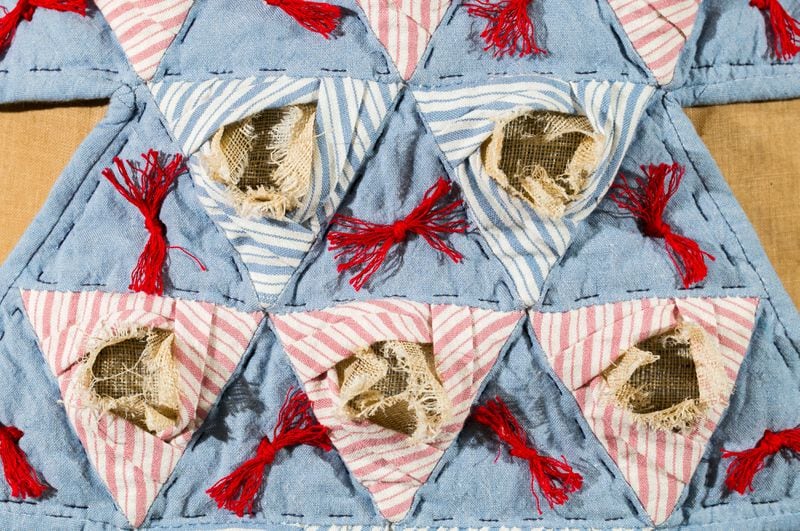“It’s something I thought was really beautiful. These women were very skilled. I picked it up naturally and it was encouraged,” the artist, 65, told ArtsATL recently. “It informed my life and what I wanted to do.”
For her last two years of high school, Lovell attended the North Carolina School of the Arts, where she took visual arts courses and always referenced cloth or stitching in her work, either directly or indirectly.
In 1981, she graduated from Virginia Commonwealth University with a bachelor’s degree in fashion design and worked in the industry in New York City for 20 years. She taught fashion courses in the Middle East for Virginia Commonwealth, then in South Korea and later in Africa as a volunteer.
“It became my passion,” said Lovell, who lives in Raleigh, North Carolina. “I had always made art, but I started to make it more seriously, and that’s when I started exhibiting.”
Lovell’s travels have taken her to more than 40 countries, exposing her to different fabrics, clothing and techniques. The more she saw how people around the world worked with cloth and clothing and what it meant in different cultures, the more excited she became about working with textiles. “I tell my friends that I’m a textile geek, a cloth and clothing geek,” Lovell said. “I love what clothing can say.”
The idea for one of the Hammonds House exhibits, “The Ties That Bind,” came to Lovell when she was working on a project in graduate school about women and enslavement and how enslavers excused their actions of slave rape by claiming their victims were animals. As she researched aprons for the project, she came across information on African modesty aprons, which women created out of various materials to cover themselves and retain their dignity.
She decided to counter enslavers’ excuses and perception of women by creating modesty aprons for her female ancestors. She tucked the…
Read the full article here


